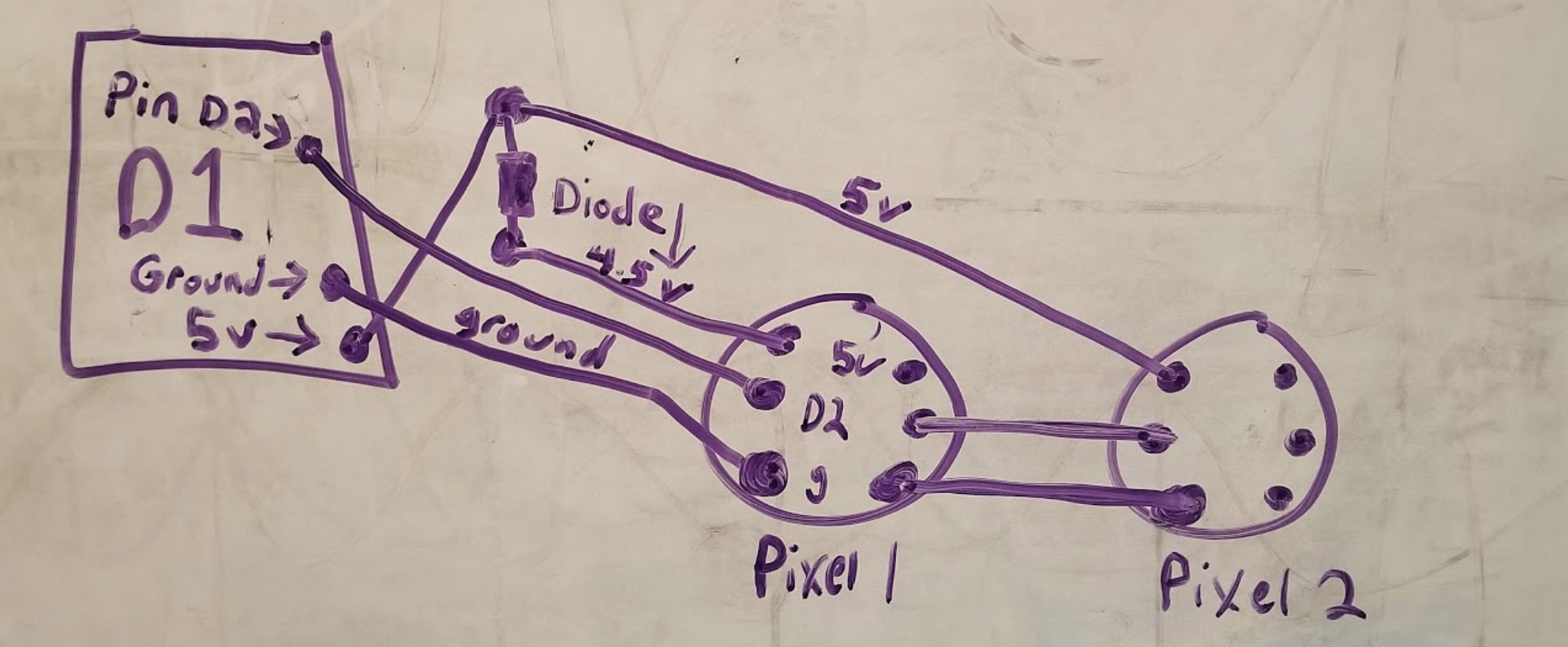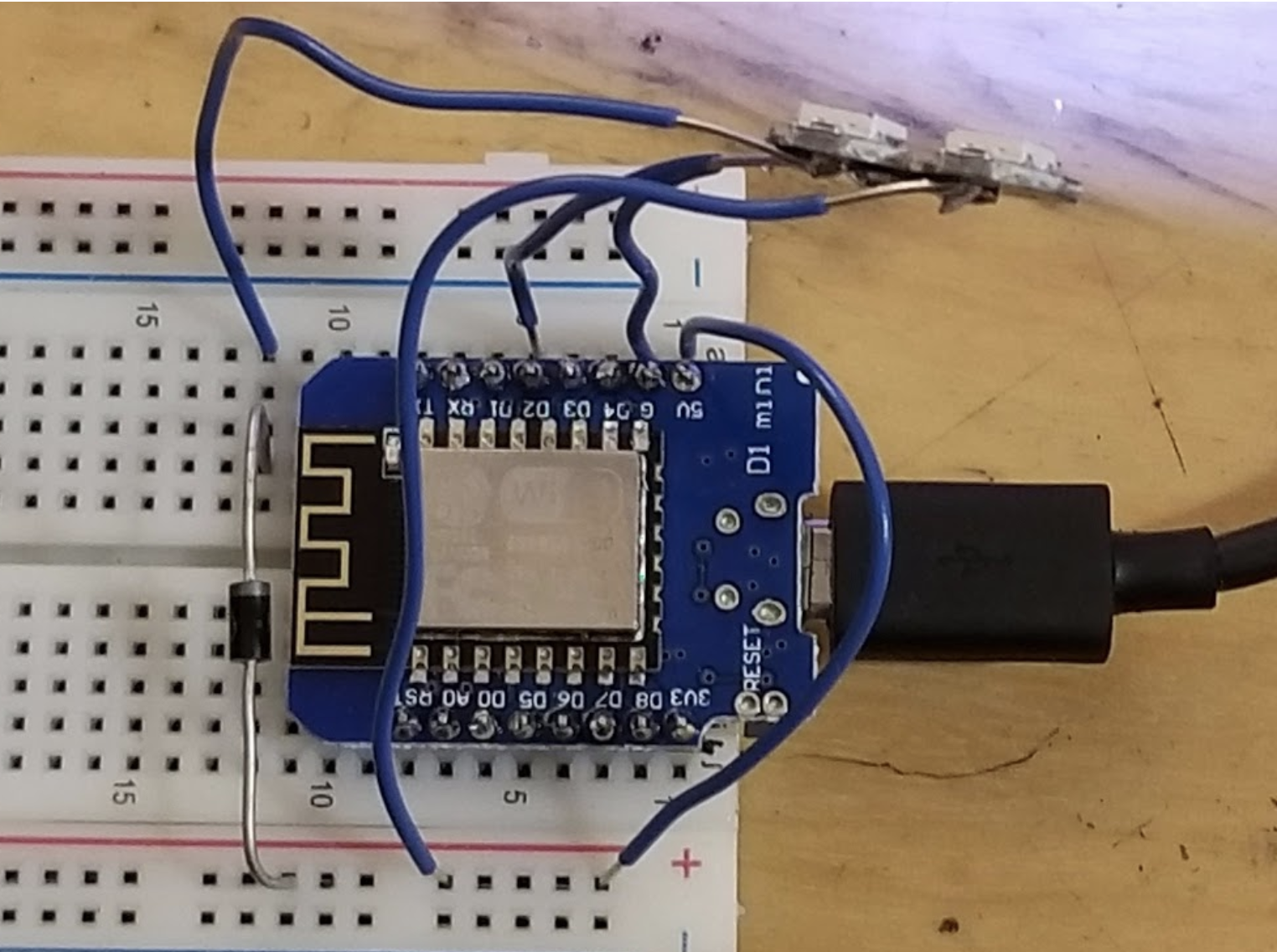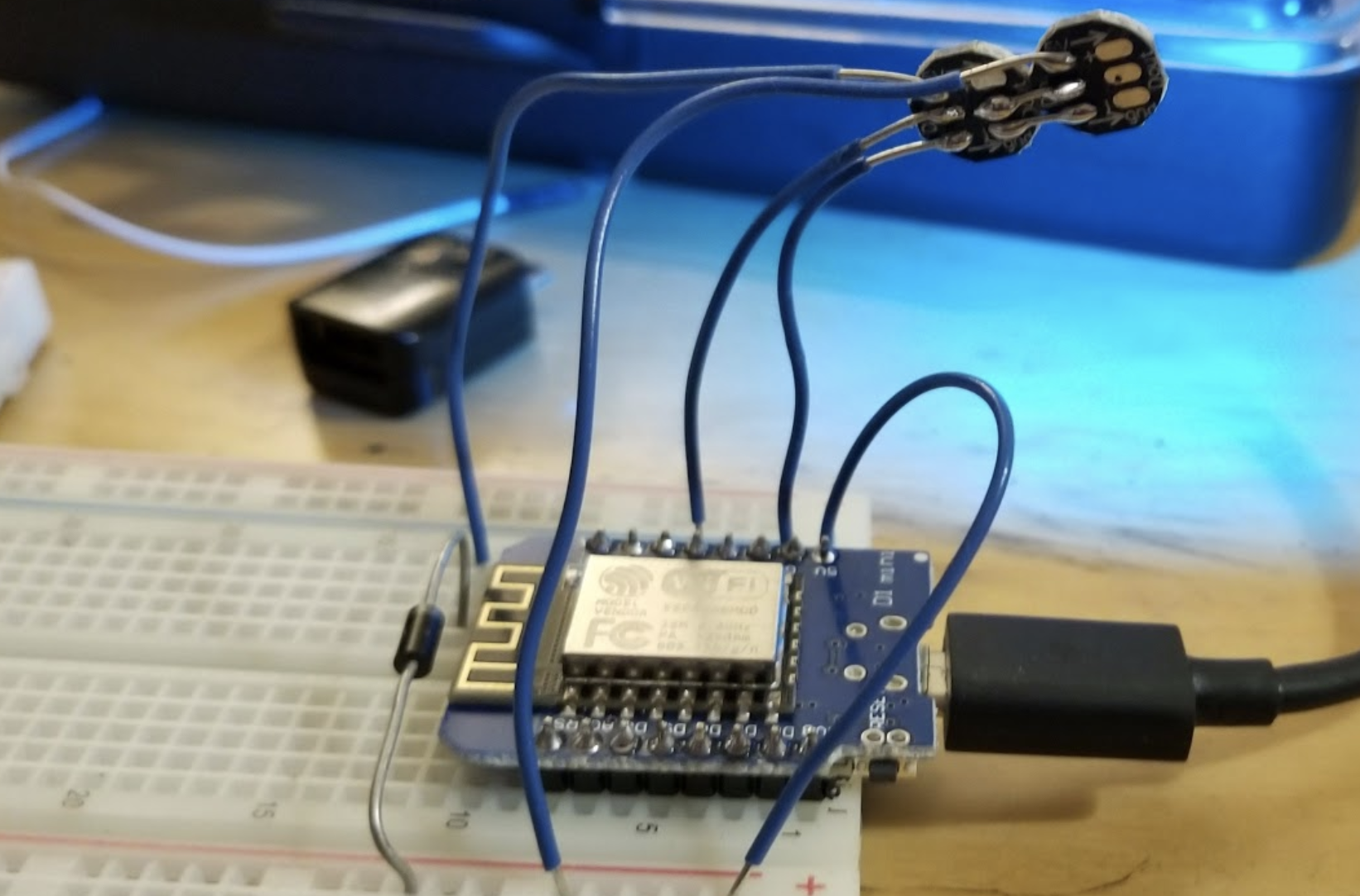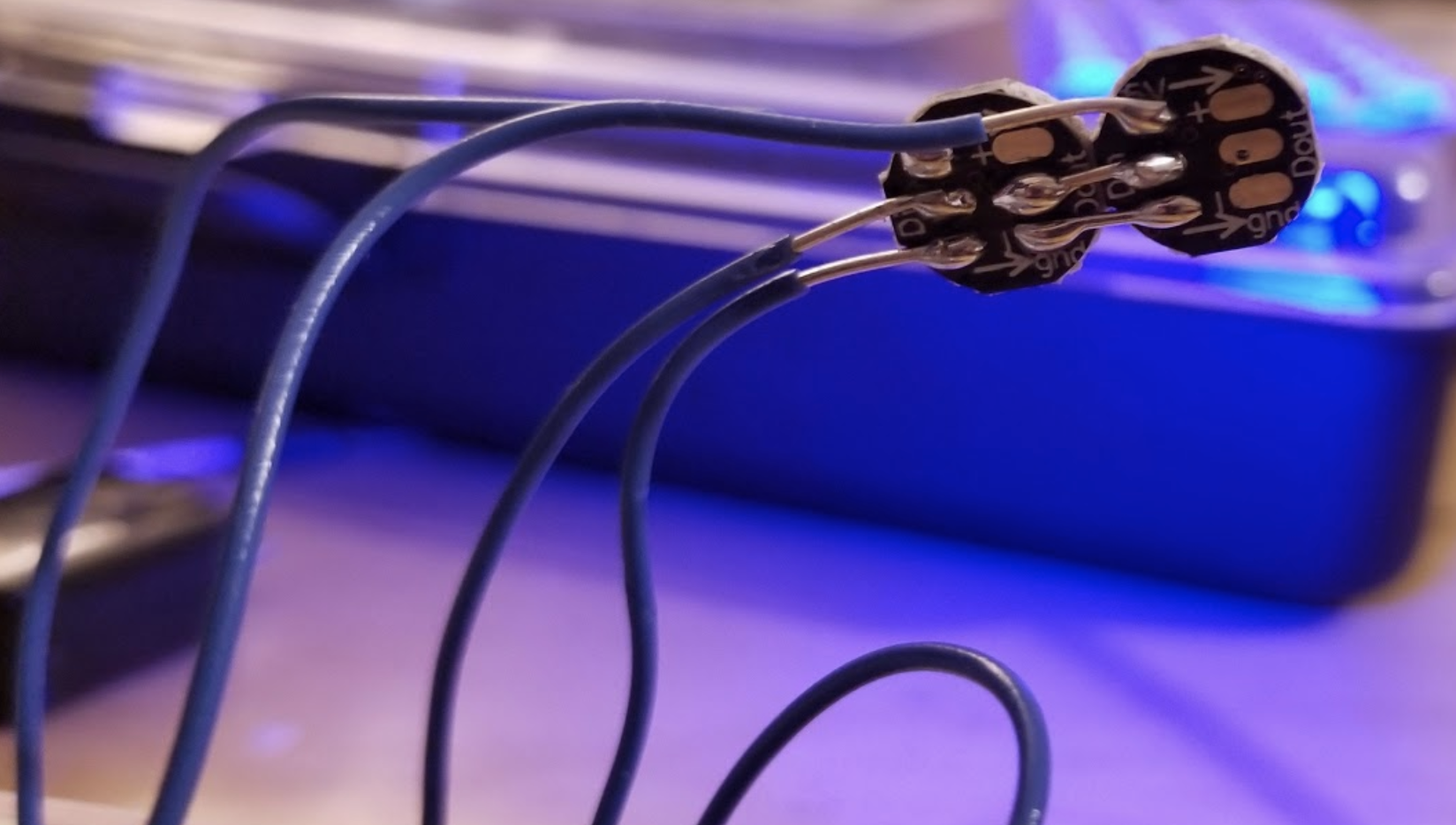-
V1 with tiny white LED's on copper wires is done!
12/23/2018 at 21:11 • 0 comments![]()
Using fairy lights from the dollar tree, I'm having a hard time trying to drive 5v to them using a darlington pair, it's barley brighter than the 3.3v signal from the D1 mini I'm using. I'm changing this so that v2 can drive a neopixel animation on a long strip rather than trying to drive 5v with the 3.3v signal. I'm hoping driving 5v through the neopixel strip using an idea with a diode I found on hackaday will make it easier for this to be flashier.
-
Driving neopixels with only a ESP8266 & Diode
12/23/2018 at 21:11 • 0 commentsIndividually addressable LED’s, often referred to as neopixels, allow precise control over individual lights in a string, allowing you to program animations and other interesting effects. Because you can control the red, green, and blue value of any LED individually, the variety of colors, patterns, and animations is up to your imagination.
An ESP8266 based device like a D1 Mini or NodeMCU can’t normally control neopixels without a level shifter, but thanks to a clever hack using a diode, we can get around this shortcoming. The reason this problem happens is that the lights take 5 volts of power, and the signal pin from the D1 Mini can only output 3.3 volts.
Because a neopixel will not react until the signal voltage is at least 70% of the supply voltage, we can use a diode to drop the supply voltage down to 4.5, which is low enough to be successfully controlled with the 3.3 volt signal.
Wiring diagram and examples:
![]()
![]()
![]()
![]()
-
Swapping the fairy lights for neopixel strips
12/23/2018 at 21:05 • 0 comments![]()
The V2 neopixel version is done, it now races red and green animations as someone walks by. Ultrasonic distance sensor accuracy is seriously reduced thanks to driving 153 LED's with a NodeMCU. Going to see if the PIR works better tomorrow so I can enclose the whole thing.
Reactive Sub $10 Arduino Christmas Lights
Making holiday lights that turn on when someone is nearby using an ultrasonic (and later PIR) sensor
 Edit My Profile
Edit My Profile




